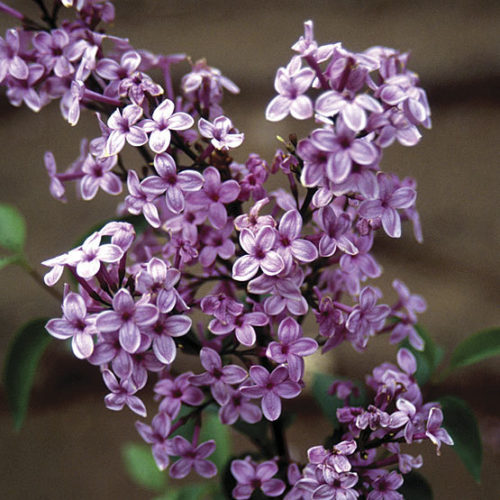
This fragrant cultivar produces slightly nodding light-purple flower clusters to 6 inches long in midseason. It forms a spreading shrub, 12 feet tall and wide, and shows good disease resistance.
Noteworthy CharacteristicsGood disease resistance.
CareGrow in reasonably fertile, well-drained soil in full sun; prefers neutral to slightly alkaline soil. Promptly deadhead spent blossoms to produce more robust blooms for the following year. Prune lightly in late winter or early spring to maintain a healthy framework, remembering that most species form flowers the previous season. Plant in areas with good air circulation to thwart disease. Because lilacs are fire retardant, they can be considered for planting near homes that are susceptible to wildfires. Most lilacs require a period of chilling dormancy.
PropagationTake softwood cuttings or layer in early summer. Graft in winter; bud in summer.
ProblemsPowdery mildew, dieback, leafroll virus, mycoplasma-like organisms (MLO), root knot nematode, Verticillium wilt, witches' broom, bacterial leaf spot, anthracnose, borers, scale, caterpillars.
- Genus : Syringa
- Plant Width : 10 to 15 feet
- Plant Height : 10 to 15 feet
- Zones : 3, 4, 5, 6, 7
- Characteristics : Attracts Hummingbirds, Fragrant Flowers
- Tolerance : Deer Tolerant, Disease resistant, Frost Tolerant
- Bloom Time : Early Spring, Spring
- Uses : Foundation Plantings, Sun
- Light : Full Sun to Partial Shade
- Foliage Color : Green
- Maintenance : Low
- Moisture : Medium Moisture
- Growth Rate : Moderate
- Flower Color : Purple
- Plant Type : Shrubs
- Plant Seasonal Interest : Spring Interest



























